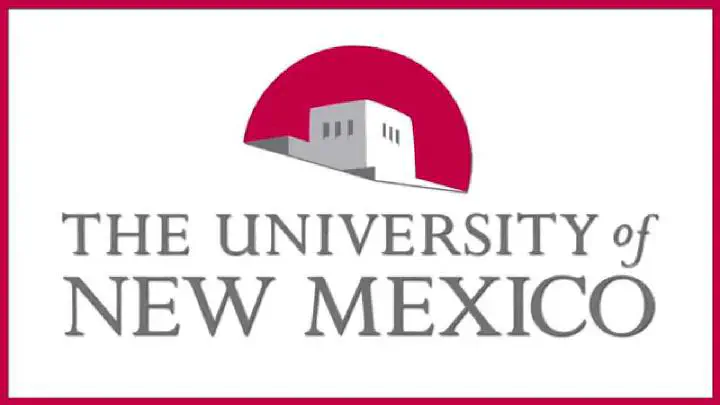UNM to Dedicate Supercluster Computing Facility

United States Senator Pete Domenici and University of New Mexico (UNM) President William C. Gordon will be among those participating in the dedication of a new Supercluster Computing Facility at 4 p.m. Thursday, April 8, at the Albuquerque High Performance Computing Center (AHPCC), located on the UNM campus at 1601 Central Ave. NE.
Joining them will be Larry Smarr, director of the National Computational Science Alliance (Alliance) and the National Center for Supercomputing Applications (NCSA), and Anand Chandrasekhar, general manager of the Intel Workstation Products Group.
The Alliance, a National Science Foundation funded partnership, will also introduce its first 128-processor Linux-based workstation supercluster, which will be housed at UNM’s Supercluster Computing Facility. The supercluster, called “Roadrunner,” is the latest addition to the National Technology Grid, the Alliance’s arsenal of powerful computational resources. The Grid connects a broad range of parallel computing systems, located at facilities from Boston to Maui, into a single virtual machine room.
“Superclusters and supercomputers have made UNM a national leader in this strategic area,” said UNM President William C. Gordon. “We now have two supernodes on the National Technology Grid - the Roadrunner cluster at AHPCC and our nationally recognized supercomputing resources at the Maui High Performance Computing Center.
“UNM stands committed to continued collaborations with the Alliance, Sandia National Laboratory, Los Alamos National Laboratory, and the Department of Defense to deliver production-level, scalable computing resources to the scientific community,” he said.
Based on the latest off-the-shelf technology, Roadrunner is the first large Linux-based workstation cluster to be added to the Grid. Roadrunner will provide the scientific community with a shared, cost-effective production environment for solving computational tasks too large for individual workstations. Roadrunner is designed to support traditional high-performance computing applications and emerging national information infrastructure applications, such as scalable Web serving, interactive visualization/data exploration, information serving, and data mining.
“Scalable clusters represent the most rapidly growing architecture of high-end computing,” Smarr said. “By filling the gap between desktop workstations and teraflop-scale supercomputing systems, clusters provide a very cost-effective source of computing power close to the user.”
“The focus of the Linux Supercluster activity is to provide a shared cost-effective parallel-computing environment for researchers across the nation,” noted Frank Gilfeather, executive director of UNM’s High Performance Computing, Education and Research Center, which manages AHPCC and MHPCC. “Roadrunner provides the computing power of a comparable conventional supercomputer at about one-tenth the cost.”
Roadrunner is an AltaCluster by Alta Technology Corporation containing 128 Intel 450 MHz Pentium II processors. The Supercluster runs the Linux operating system and the processors are interconnected via a Myrinet network. UNM, Intel, and Alta Technology Corporation are working together and with others in the industry to develop the Roadrunner Supercluster as a national shared computing resource for academic research. Plans are to develop the Roadrunner to 512 processors over the next year if resources are available.
Anand Chandrasekhar, general manager of the Workstation Products Group at Intel, stated, “We are excited to see Intel Architecture based workstation technology as the foundation for the Alliance’s National Linux Supercluster being deployed at UNM. Intel is focused on driving the performance available with Intel-based workstations, which is resulting in rapid adoption of our systems in commercial markets and increasingly, for the highest-end technical and research applications.”
UNM will also collaborate with the Alliance, Sandia National Laboratory, and Los Alamos National Laboratory to build and deploy the software technology necessary for scalable Linux clusters.
The National Computational Science Alliance is a partnership formed to prototype an advanced computational infrastructure for the 21st century and includes more than 50 academic, government, and industry research partners from across the United States. The Alliance is one of two partnerships funded by the National Science Foundation’s Partnerships for Advanced Computational Infrastructure (PACI) program and receives cost-sharing at partner institutions. NSF also supports the National Partnership for Advanced Computational Infrastructure (NPACI), led by the San Diego Supercomputer Center.
The National Center for Supercomputing Applications is the leading-edge site for the National Computational Science Alliance. NCSA is a leader in the development and deployment of cutting-edge high-performance computing, networking and information technologies. The National Science Foundation, the state of Illinois, the University of Illinois, industrial partners, and other federal agencies fund NCSA.
UNM is a partner in the Alliance and serves as a regional gateway to the Alliance’s National Technology Grid for academic researchers. UNM currently provides two supernodes on the Grid, the Roadrunner Linux Supercluster at AHPCC, and the IBM RS/6000 SP supercomputing resources located at MHPCC in Kihei, Hawaii. UNM participates in these two supercomputing activities through a Strategic University Center, the High Performance Computing, Education and Research Center.